Hamsters are furry little munching machines. They eat pretty much anything they find in their natural habitats, including veggies, fruits, grains, and even meat. But what about nuts?
Can hamsters eat nuts?
Yes, they can snack on that too, but it’s not that simple. Hamsters can eat some types of nuts, while some may cause them problems. On top of that, they shouldn’t eat them too often.
In today’s article, I’ll get into the details and answer all the essential questions on this topic. To learn how to properly incorporate nuts into your hamster’s diet, I suggest you read on!
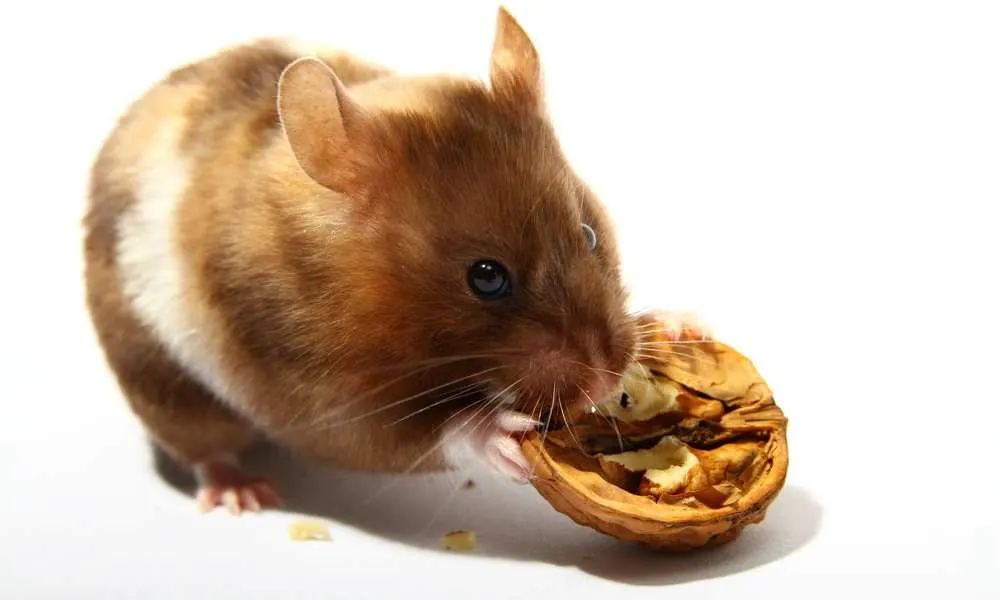
What Nuts Are Safe For Hamsters To Eat?
Peanuts
Most of us humans love peanuts and usually have some lying around the house. As peanuts are always close at hand, we’re often tempted to give a few to our hamsters.
The good news is that our fuzzy friends can eat peanuts. However, there’s a catch. They should eat them in small amounts and should only eat bare peanuts – no salt, no flavors, no oil, no sweeteners included. All of the above is not suitable for hamster consumption.
The Rules of Feeding Peanuts to Hamsters:
- Baby hamsters should never eat peanuts.
- Different types of (adult) hamsters can eat different amounts of peanuts. For instance, big hamsters, such as Robowskis, should consume one peanut a week. Smaller varieties should eat the same amount every two weeks.
- Serve peanuts with or without shells. Hamsters can bite through the shell easily; just make sure it isn’t salted. Also, it’s important to clean their cage after they finish eating as the shell tends to rot.
What About Peanut Butter?
To put it bluntly – no and no. Your hamster can handle the ingredients of some kinds of peanut butter, but it cannot cope with its consistency. Peanut butter is thick and sticky, and the hamster may choke on it.
If you, for some reason, really want to feed the hamster peanut butter, here’s what you should do to minimize the risks:
- Choose the butter without added oil
- The peanut butter must not contain salt, sweeteners, or flavors
- Serve a tiny portion, smaller than one whole peanut
Cashews
Hamsters should only eat roasted cashews, never raw. Of course, salt and other condiments are out of the picture too.
The Rules of Feeding Cashews To Hamsters:
- Just like you, hamsters cannot eat raw cashews as they’re toxic.
- Do not feed your hamster more than one cashew per week. If you have a dwarf hamster, decrease the portion to one-half of cashew.
Almonds
As with peanuts and cashews, almonds should be served only once in a while. You can give them to your hamster either raw or roasted.
Again, the almonds mustn’t be salted, oiled, or sweetened. Remember, the food you feed your hamster should resemble that which can be found in nature.
The Thing With Almonds
One crucial thing to know here is that hamsters cannot eat unrefined bitter almonds. These contain hydrogen cyanide which is deadly to small animals.
No need to worry too much, though. The standard sweet (NOT sweetened!) almonds available in most stores are safe for your little fuzzball.
The Rules Of Feeding Almonds To Hamsters:
- Almonds should be fed to the hamster occasionally as a treat. One small almond per week is more than enough for hamsters of all sizes.
- Don’t give your hamster the whole almond right away. Start by introducing a quarter of one nut and increase the portions gradually over a month.
- If you can, feed it almonds without skin, as the skin may irritate its bowels. In case you cannot find peeled almonds in your local stores, you can de-skin them yourself. Soak them in hot water for around 20 minutes, let them cool, and then remove the skin.
Walnuts
Walnuts are a tricky one, and they’re not for all types of hamsters. Namely, small varieties should not eat walnuts at all. It’s only for the big breeds (e.g., Syrians, Robowskis).
This is because walnuts contain a lot of fat, quite a bit more than other nuts. For the most petite of hamsters, this is simply too much to handle.
The Rules Of Feeding Walnuts To Hamsters:
- Once again, only feed walnuts to large hamster breeds.
- Start by feeding them one-half of a walnut, and work your way up to one whole walnut a week.
- Hamsters can be fed walnuts with shells. They do not eat the shell itself, but they’ll crack through to get to the kernel.
Hazelnuts
When it comes to feeding hazelnuts to hamsters, most of the same rules apply. They should be without salt, sweeteners, or flavors. The hamster can eat them raw or roasted, with or without the shell.
The Rules Of Feeding Hazelnuts To Hamsters:
- One small hazelnut per week is enough.
- If you can’t find organic hazelnuts, wash them before giving them to the hamster.
- It may be better to feed the hamster hazelnuts without a shell. Unlike walnuts and peanuts, the hazelnuts’ shell is a bit more challenging for the hamster to crack.
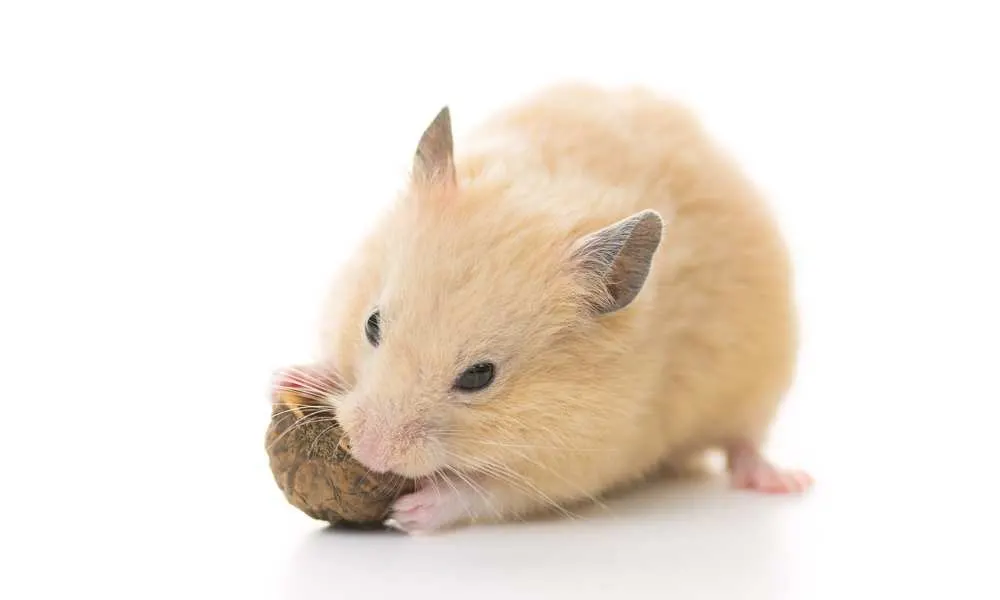
The Comparison Chart Of Nuts’ Nutritional Contents
Here’s a quick nutritional breakdown of the most hamster-friendly nuts.
| Nutrients (per 1 tablespoon) | Peanuts | Cashews | Almonds | Walnuts | Hazelnuts |
|---|---|---|---|---|---|
| Calories | 41 | 78 | 81 | 94 | 90 |
| Protein | 1.5 g | 2.5 g | 3 g | 2 g | 2 g |
| Carbs | 1.5 g | 5 g | 1.25 g | 2 g | 2.5 g |
| Fat | 2.25 g | 6 g | 7 g | 9 g | 8 g |
| Fiber | 0.5 g | 0.5 g | 1.75 g | 1 g | 1.25 g |
| Vitamin E | 2.25 mg | 0 | 0.4 mg | 0 | 2.1 mg |
| Potassium | 45 mg | 92 mg | 104 mg | 64 mg | 86 mg |
| Magnesium | 0.75 mg | 42 mg | 38 mg | 0 | 23 mg |
| Calcium | 0.25 mg | 5 mg | 38 mg | 16 mg | 15 mg |
The table above demonstrates just how different these nuts are. As you can see, walnuts are the fattiest, while almonds contain by far the most calcium. This means that each type of nut carries certain positives and risks for your hamster.
The micro and macronutrients that nuts are rich in are absolutely fantastic for hamsters’ health. Let’s take a look at how each nutrient can benefit these fuzzy animals:
- Fiber is great for the little buddies’ digestion.
- Protein makes their muscles and bones strong.
- Calcium also enhances the hamsters’ bone health.
- Potassium helps keep the cardiovascular system in check.
- Magnesium stabilizes blood sugar, a very important thing for diabetes-prone hamsters.
- Vitamin E keeps the eyes and skin healthy and prevents certain types of cancer.
There’s more to each individual nutrient than what I managed to squeeze into the lines above. Consider this to be a brief overview of their most important characteristics.
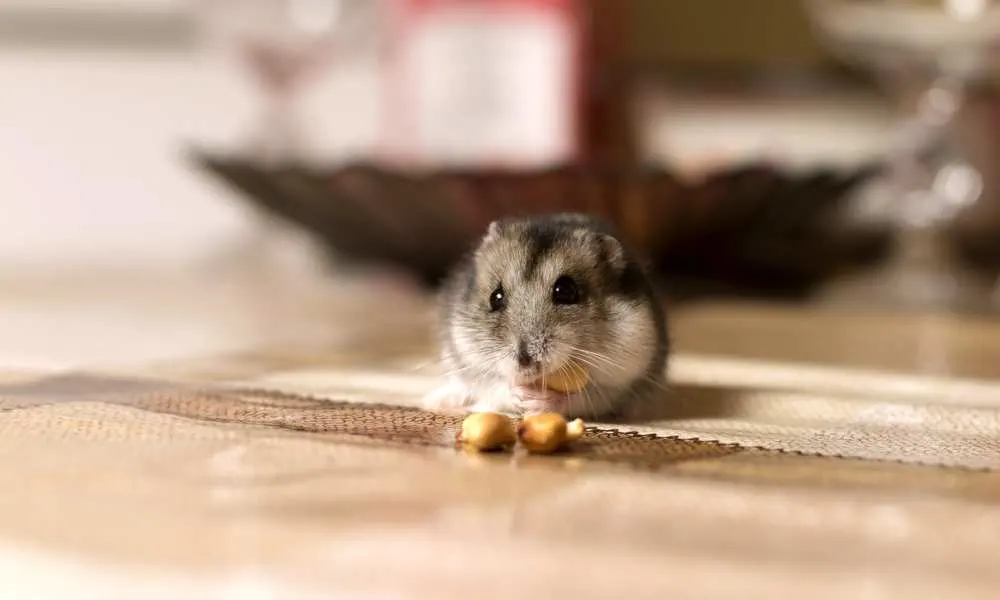
Potential Dangers of Nuts In A Hamster’s Diet
I emphasized several times that hamsters should eat nuts in moderation. Why? It’s because nuts are full of fat and are high in calories.
This means that a small number of nuts will make the hamster satiated, and they may not want to eat their regular diet after munching on some nuts. Over time, this may lead to nutritional deficiencies and certain diseases.
Believe it or not, hamsters are at a high risk of getting diabetes if not fed properly. High-fat foods can lead to this condition. Aside from diabetes, nuts may cause bloating and diarrhea in some hamsters.
With all this in mind, please, introduce nuts into the hamster’s diet slowly and do not exceed the recommended portions.
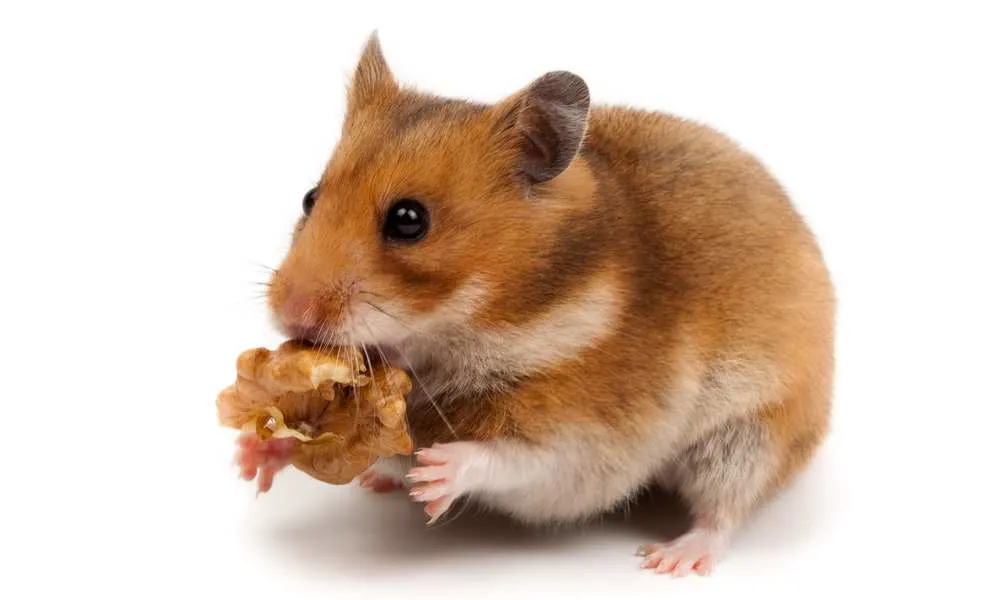
Should You Feed Your Hamster Nuts?
Yes, you definitely should. If consumed sparingly, nuts carry many health benefits for hamsters. Another great thing about nuts is that hamsters view them as a treat, the same way you may view candy. This implies that your furry friend will be very happy at the sight of a nut and will like you more for giving it to him!
In other words, feeding your hamster nuts can be a bonding experience between you two.
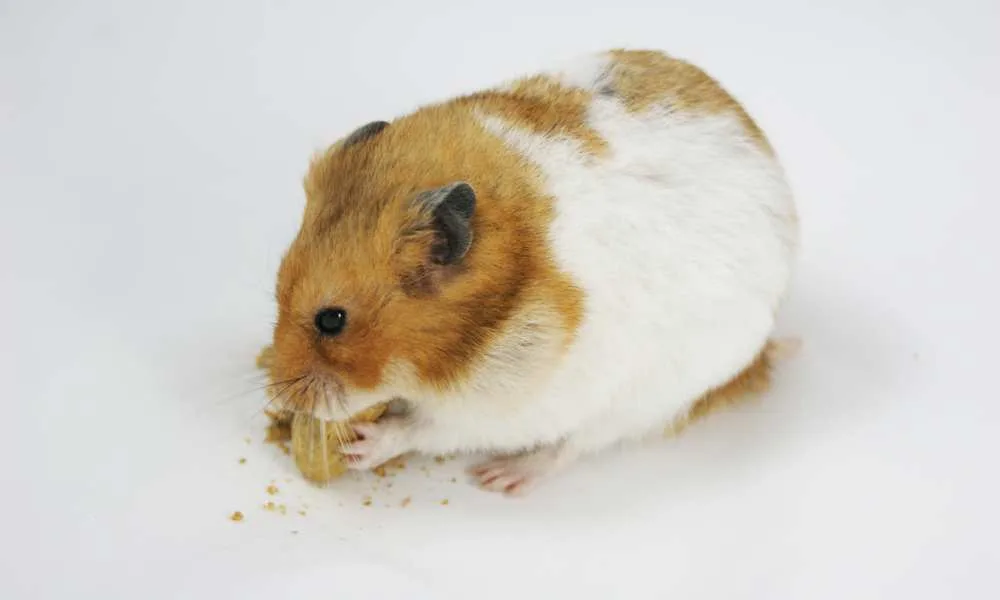
Conclusion
Since nuts are such a specific food, I’d like to do a quick recap of the do’s and don’ts when feeding them to hamsters:
- Start slowly – introduce a part of a single nut first instead of the whole nut.
- Plain nuts only – they must not contain salt, sugar, or anything else.
- Listen to your hamster – if the hamster doesn’t want to eat other food after eating the nut, it may be too much for it. Decrease the portion and serving frequency.
I hate sounding like a broken record, but the points above cannot be overemphasized. Follow the simple advice given in this article, and your beloved hamster will thrive!
Learn More: What Can Hamsters Eat? A Complete Food List For Hamsters

